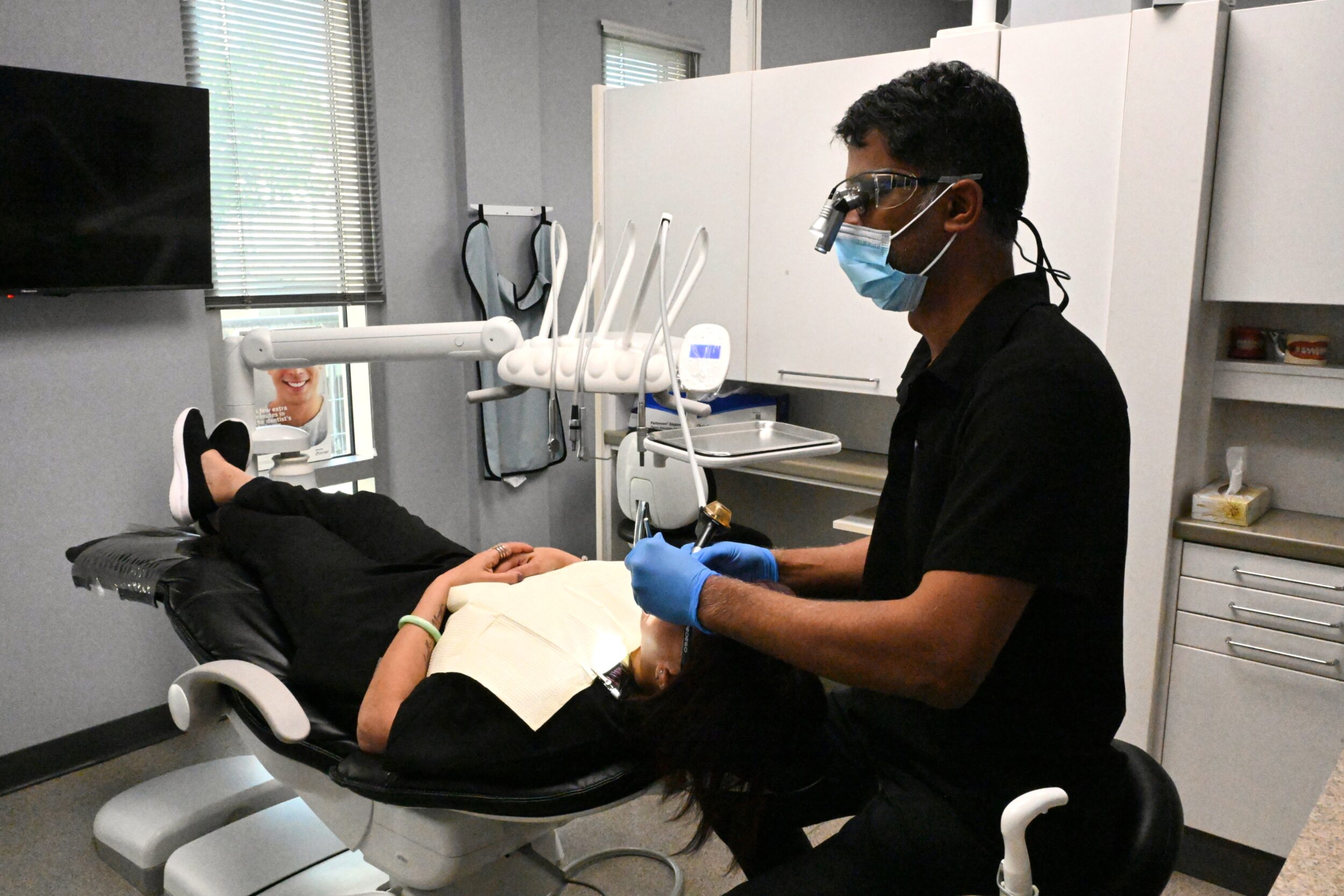Diagnosis
In order to diagnose periodontitis, your dentist or dental hygienist needs to perform a periodontal examination. Whenever you go to the dentist for a regular check-up, you should always include this type of exam in the procedure.
In order to measure the sulcus (pocket or space) between a tooth and the gums, a periodontal probe (small dental instrument) is gently used. A healthy sulcus measures three millimeters or less in depth and does not bleed. Periodontal probes are used to determine whether pockets are deeper than three millimeters. There is a tendency for the pockets to become deeper as the periodontal disease progresses.
Depending on the extent of the pocket depth, bleeding, inflammation, tooth mobility, etc., your dentist or hygienist will be able to make a diagnosis that will fall into one of the following categories:

Periodontitis
As plaque hardens, it becomes calculus (tartar). Consequently, the gums begin to recede from the teeth as calculus and plaque continue to accumulate on them. As time goes on, deeper pockets develop between the gums and teeth and become clogged with bacteria and pus. As a result, the gums become very inflamed, irritated, and bleed easily. There may be some bone loss, ranging from mild to moderate.
Gingivitis
It is important to understand that gingivitis is the first stage of periodontal disease. As a result of plaque and its toxin by-products, the gums are irritated and become tender, inflamed, and likely to bleed when they get infected.
Advanced Periodontitis
It is becoming increasingly difficult to support the teeth as the gums, the bone, and the periodontal ligament continue to deteriorate. As a result, if the affected teeth are not treated, they will become very loose and may even fall out. There may be a generalized loss of bone mass ranging from moderate to severe.